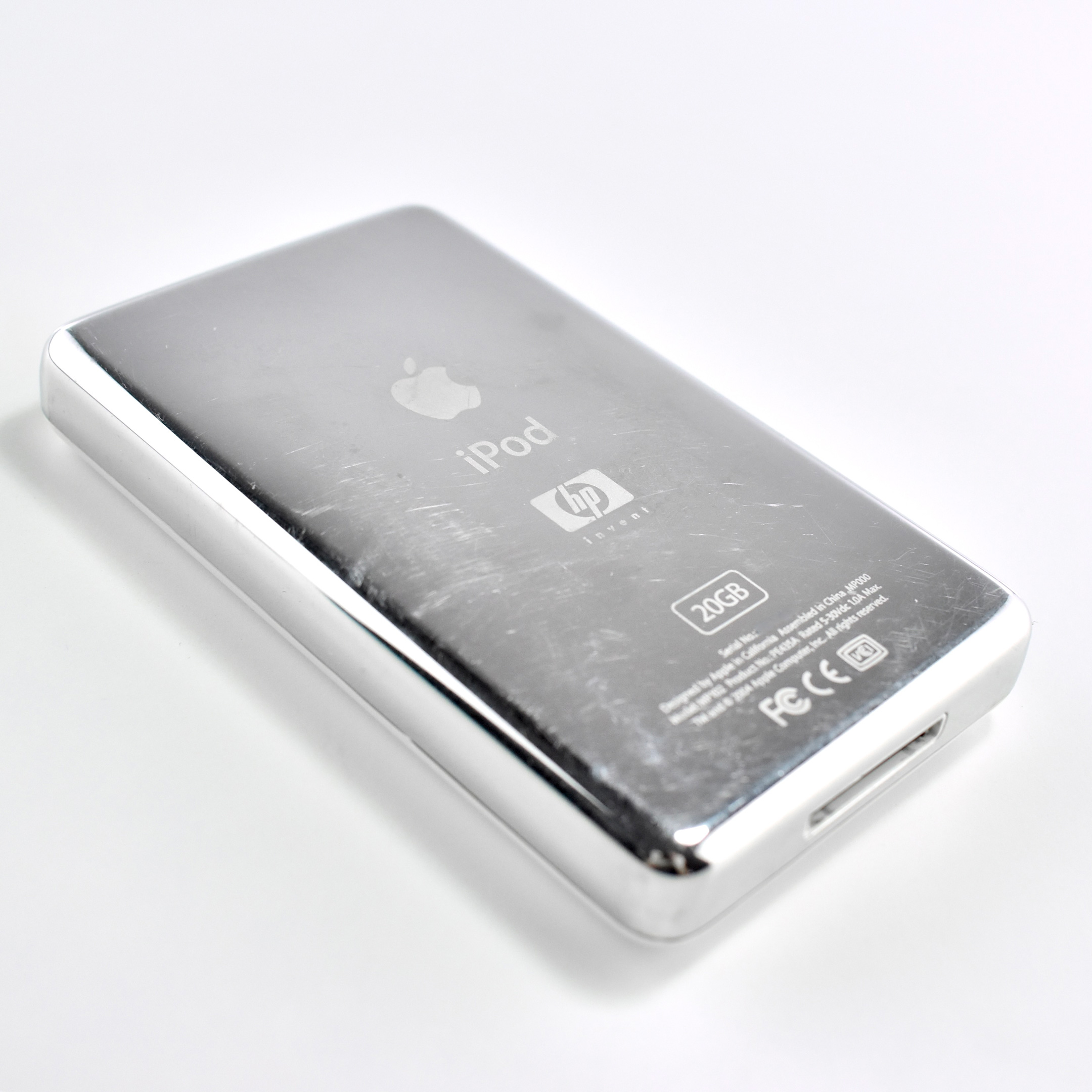On January 9, 2004, HP’s then-CEO, Carly Fiorina, announced an “iPod+HP” partnership between Apple and HP. The first iPod+HP device was this Generation 4 iPod, available with 20GB and 40GB of storage. Three more iPod+HP models were added during the partnership, including iPod mini, iPod photo, and iPod shuffle.
During her speech at the Consumer Electronics Show, Fiorina announced the partnership and held up an example Generation 4 iPod+HP device, reporting that the Apple iPod from HP would be sold in a custom “HP blue” color, a powdery shade of blue resembling the color of faded denim. Based upon the demo unit she held, the iPod front and scroll wheel were blue, while the back remained polished chrome. When the iPod+HP device was released, it was not offered in blue, but remained white. However, the back of the device was engraved with the Apple logo, the word “iPod,” and the “HP invent” logo.
According to the Stories of Apple website, “this was the first (and only) iPod license ever allowed: Apple would manufacture a version of the iPod for HP and the iTunes software would be pre-installed on all HP Pavilion and Compaq Presario computers.” The partnership was not successful and was terminated after 18 months.
Regarding the iPod+HP design and functionality, the device was very similar to the Apple iPod Generation 4 sold by Apple at the time. According to EveryMac: “There is extremely little difference between Windows-compatible Apple iPods and the corresponding models that were offered from Hewlett-Packard. Each are identicial except HP added an HP logo below the Apple logo on the back of each player and shipped their models in a box that matched the design of other HP products.”
This model originally contained a 20GB or 40GB 4200RPM ATA-66 hard drive that could hold 5,000 or 10,000 songs. It uses a ClickWheel for navigation and has a 2-inch grayscale screen at 160×128 resolution. Its battery supported up to 12 hours of continuous music playback with features including Shuffle, voice record, games, and an alarm clock.
Perhaps to make up for the inexplicably non-blue iPod color offering, HP used its extensive printer and printing accessory experience to sell “HP printable tattoos” for the iPod. An HP press release reported, “Digital music enthusiasts can now personalize the look of their Apple iPod from HP as easily as they customize their playlists with the launch of HP Printable Tattoos.” The stickers were butterfly-shaped and included both pre-printed designs and blank sheets so “digital music enthusiasts” could design their own iPod skins.
This iPod+HP model originally contained a 20GB hard drive; however, this device has been retrofitted with a new battery and flash memory storage.
My collection also includes this same model with the original hard drive intact. This iPod is in slightly worse condition than the example shown here. I acquired the non-retrofitted iPod in late 2023.
Sources: EveryMac (FAQ, specifications), Wikipedia, iLounge, HP, Stories of Apple




























